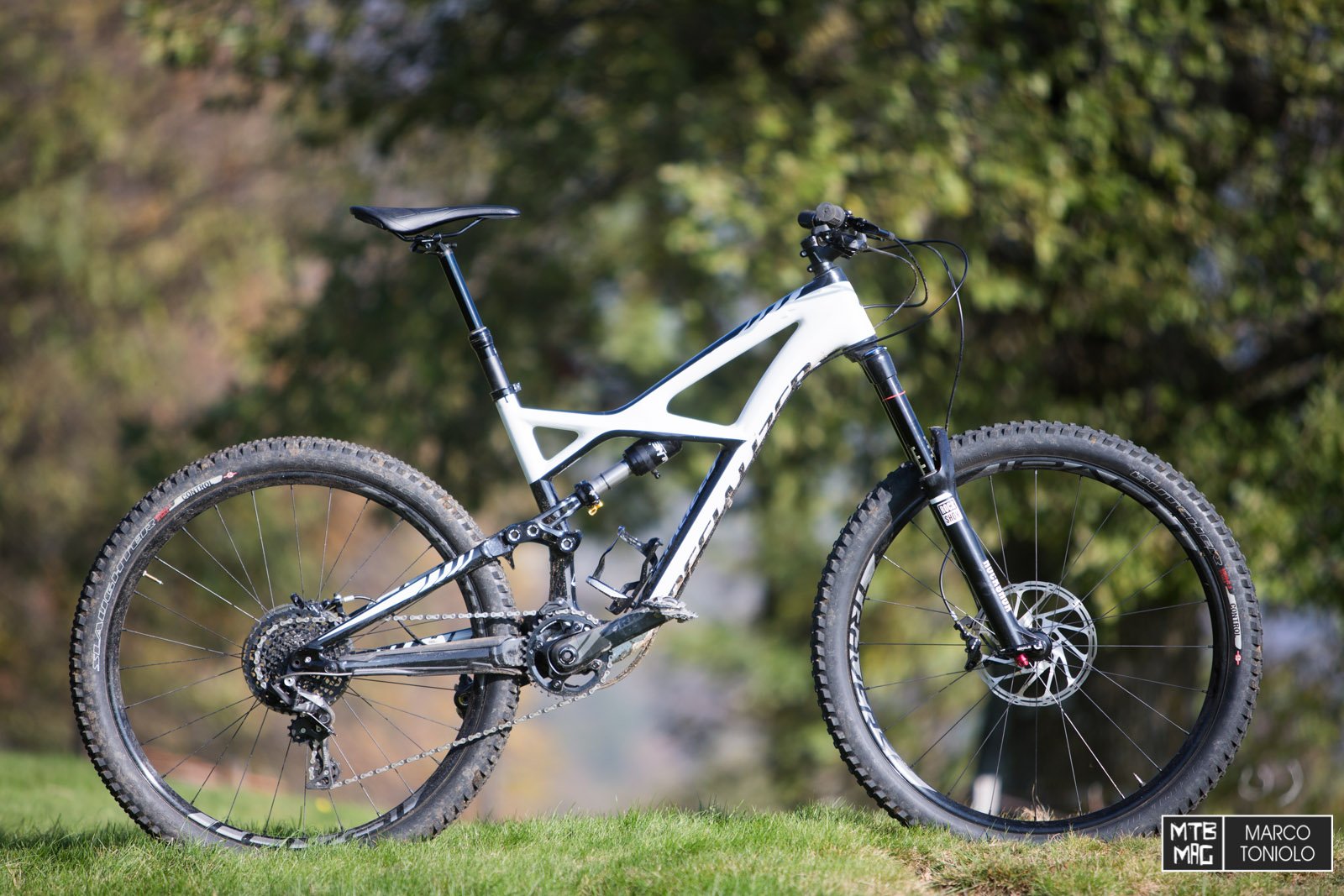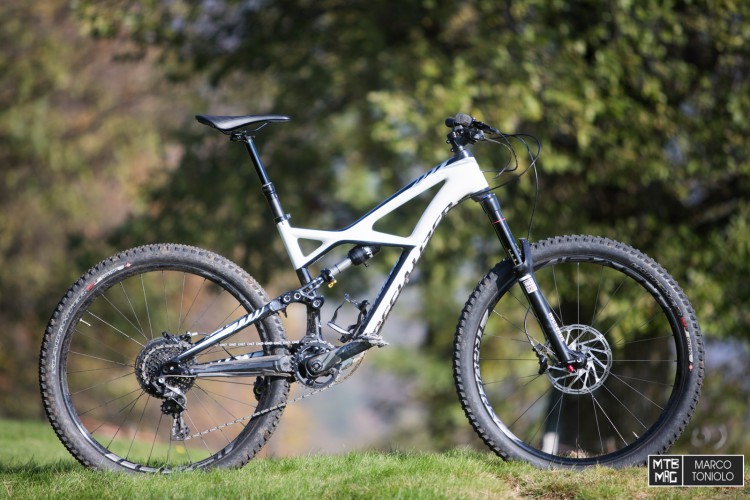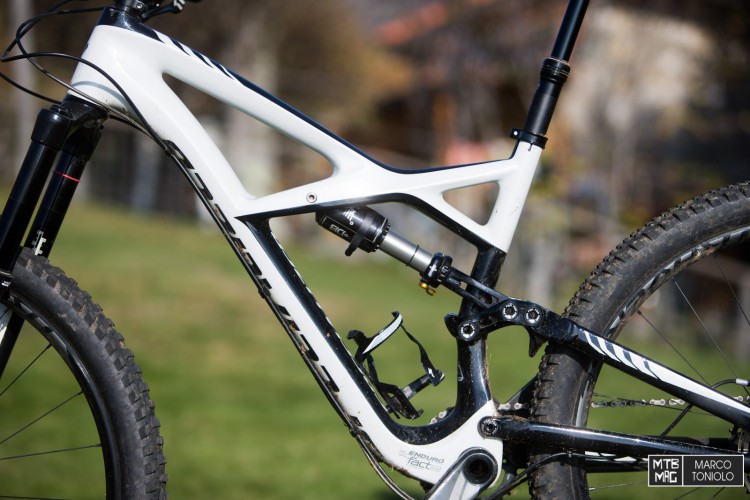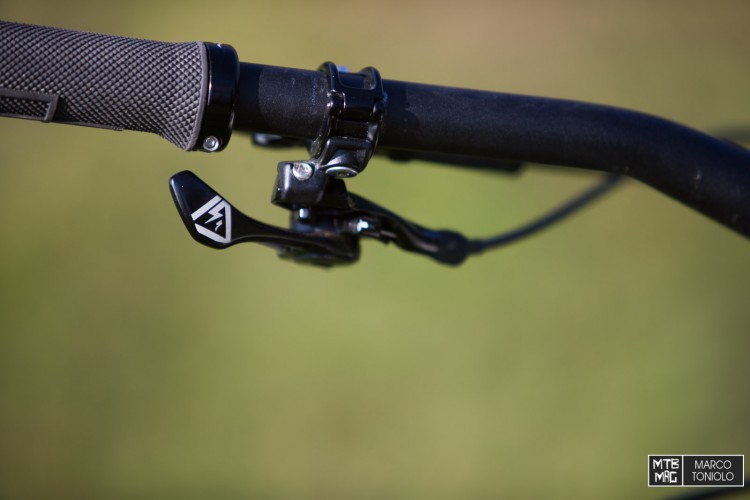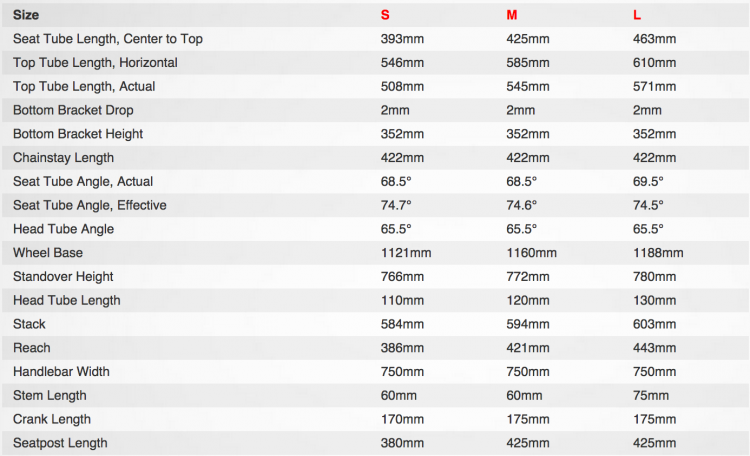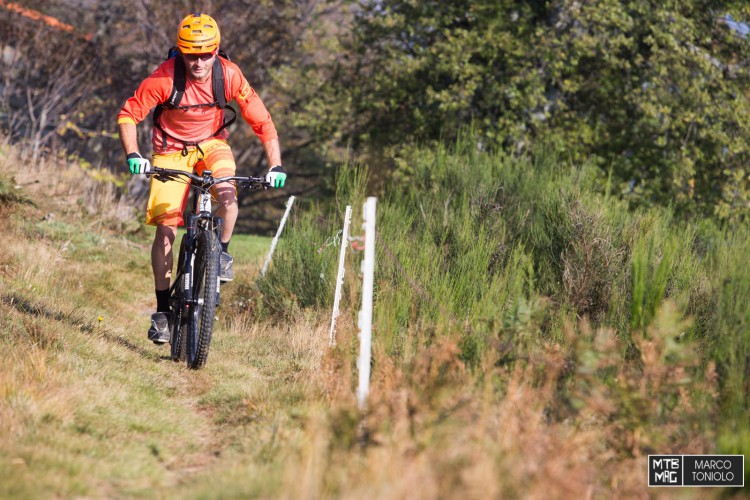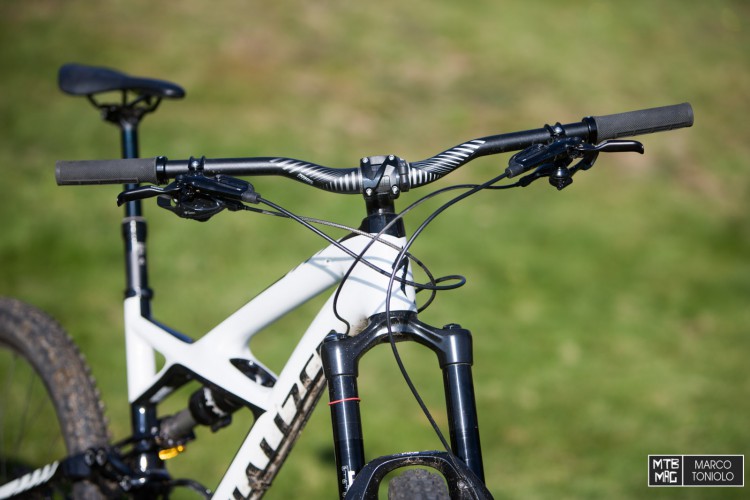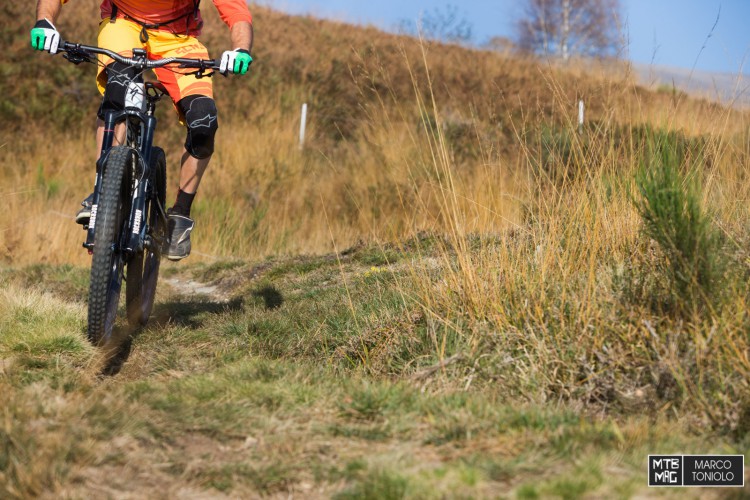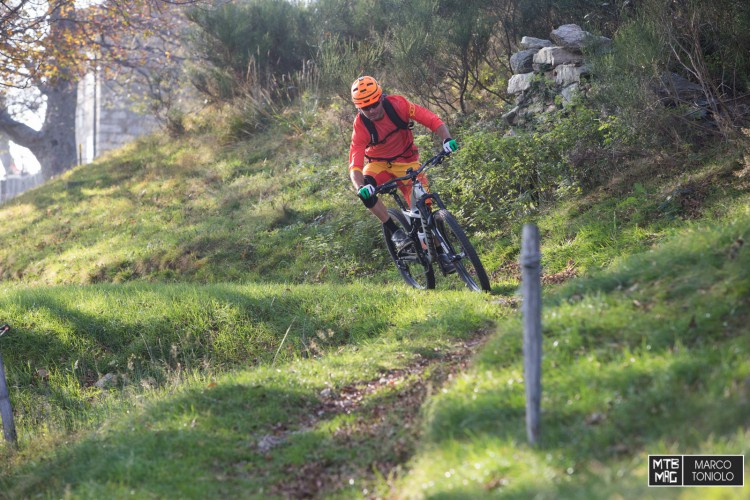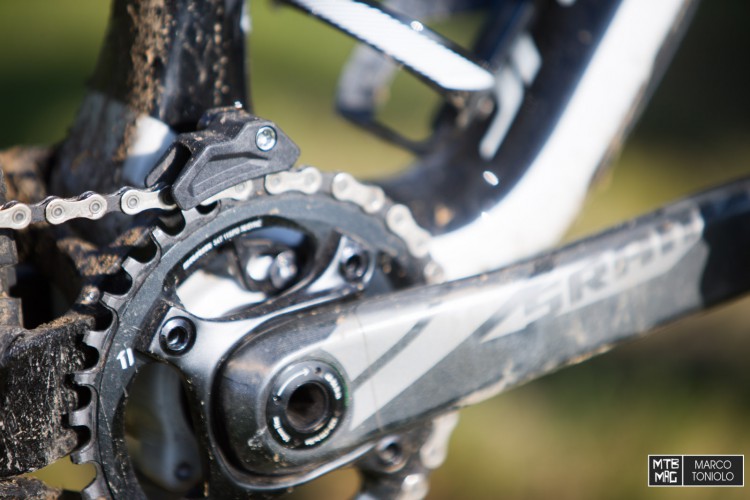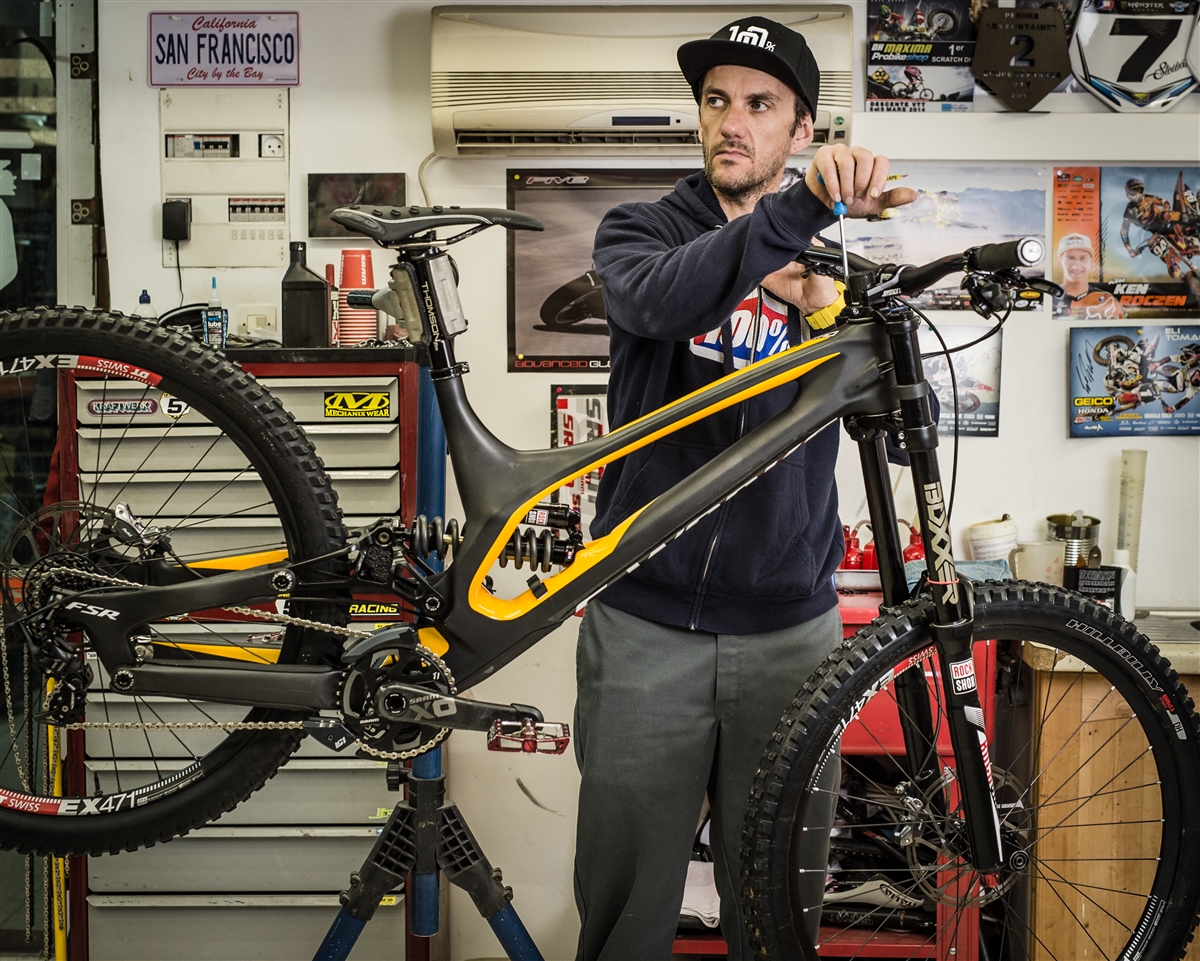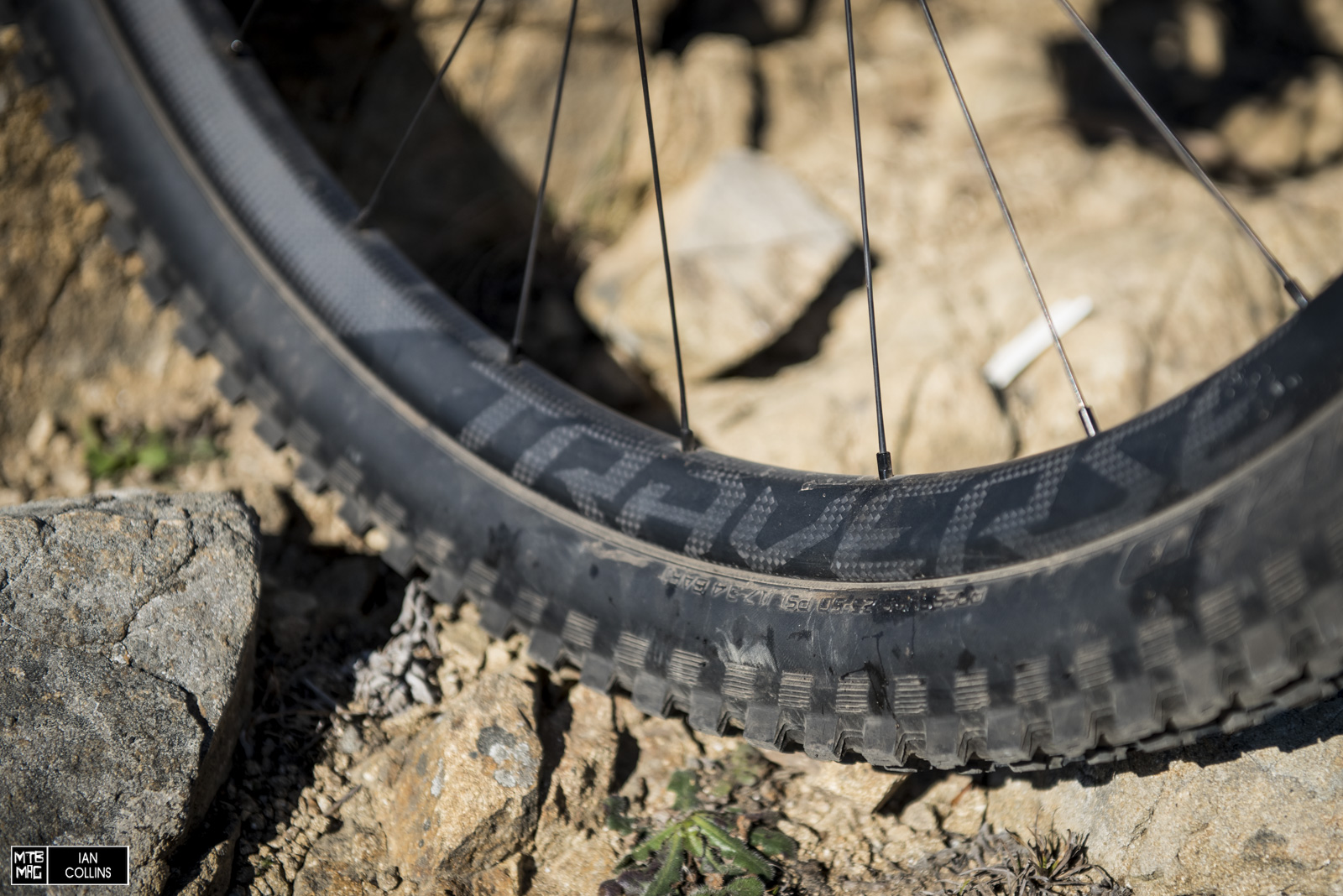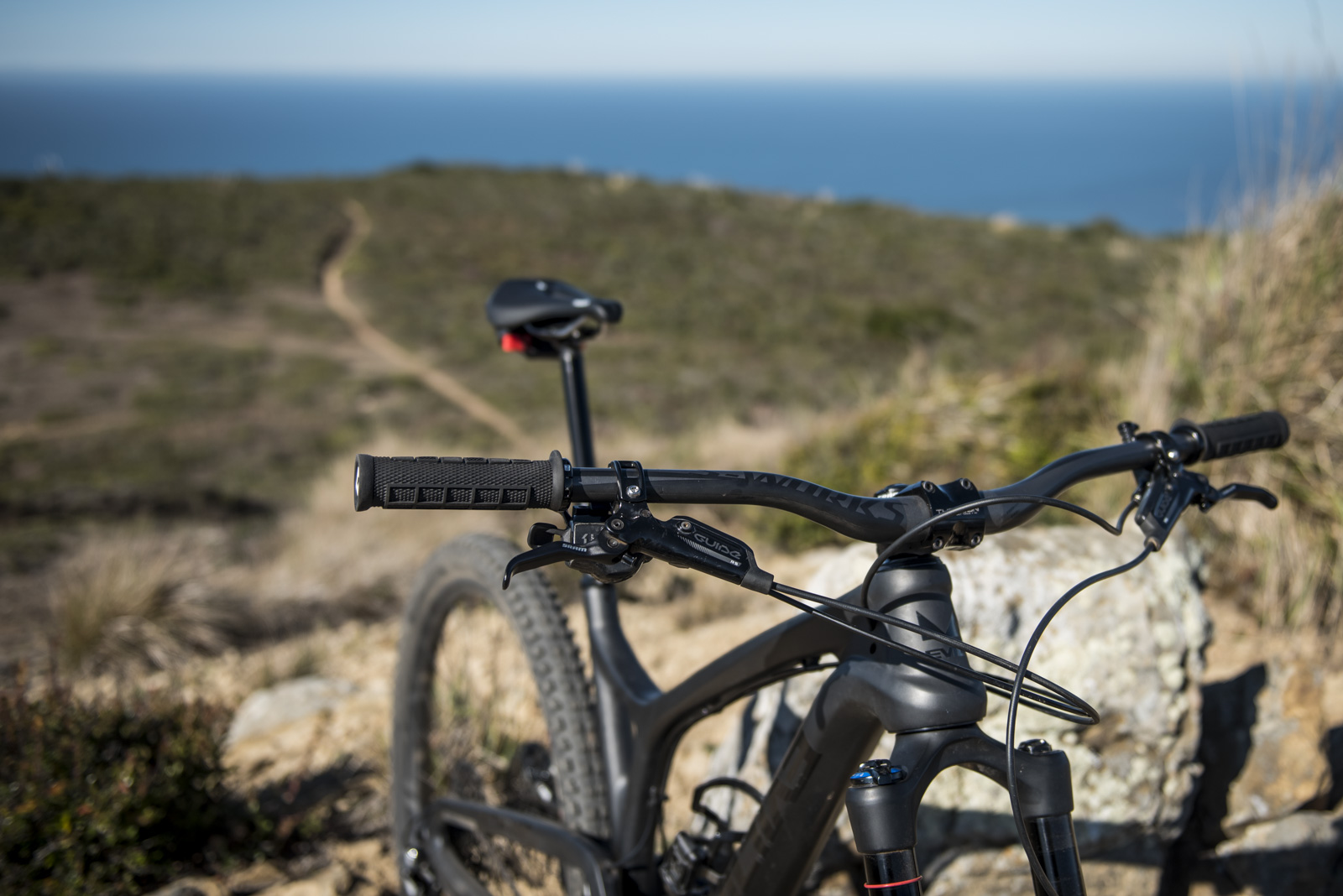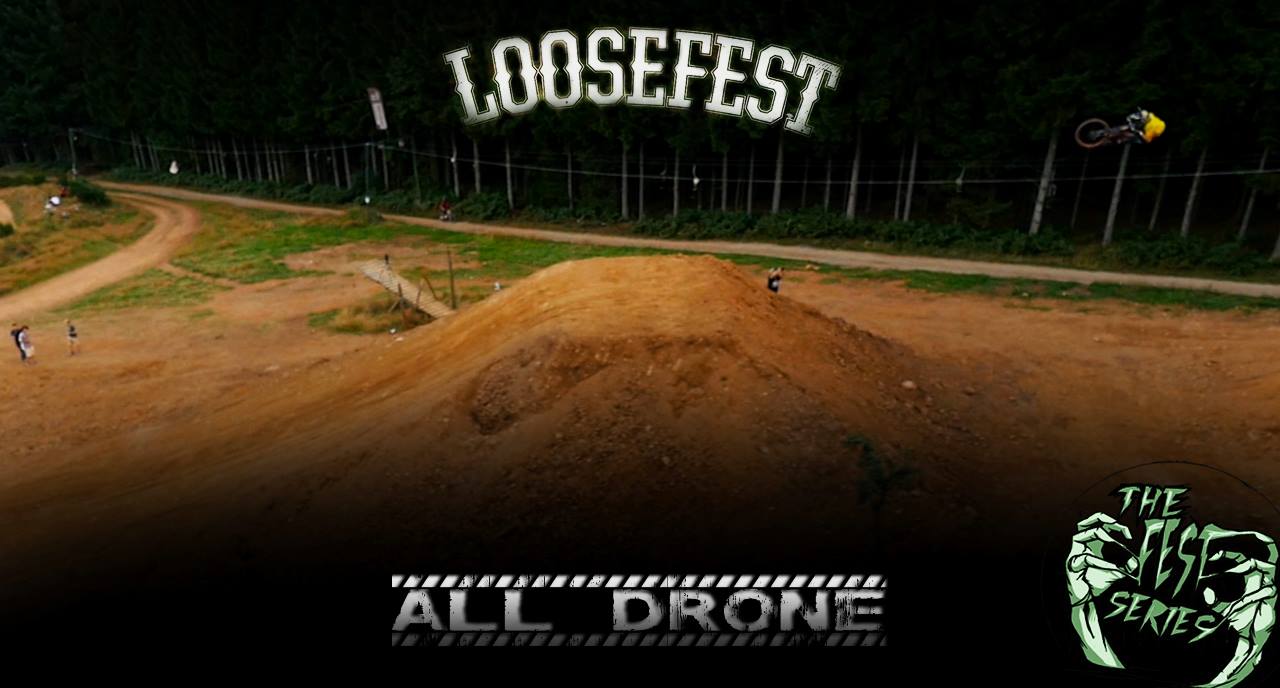This is quite possibly the most discussed bike of 2014 – in July, when Specialized announced the new Enduro becoming available in 650b, the internet was ablaze with comments. Actually the Californian brand is just swapping the 26″ bike to the modern 27.5″ wheel size. You will still find the highly praised Enduro 29er in the shops, so why complain? Maybe it was the long, drawn out process to bring out this bike that provoked the storm. It looked like Specialized didn’t believe in this wheel format for its enduro bikes (and beyond). That’s what makes this review really interesting: is the Enduro 650b just a commercial move or did the Specialized engineers produce a new killer bike?
In the past, we rode the Enduro 29er Carbon and we were blown away by the details and care taken in the design which made that bike a best seller. Is the Enduro 650b going to walk the same path?
Out of the box
The Enduro Expert Carbon frame is the same one you will find in the S-Works models, with a Fact IS-X carbon front triangle and M5 alloy chainstays. The front triangle is also the same as the 26″ Enduro, paired to a new chain stay, seat stay, and shock extension designed to fit the bigger wheels. We have to admit it is a beauty with its unmistakable X form. Because of the new chainstay sizing, only a 1x drivetrain can be mounted on this bike.
The new Cane Creek Inline damper takes care of the 165mm of rear travel. In perfect CK tradition, also this shock is tunable with an alloy key for high/low speed compression and high/low speed rebound but, compared to the Double Barrel Air, is much lighter and less bulky without piggy back, and in this case it means you can fit a bottle in the frame.
Some people will not like the cable routing under the BB but, as a matter of fact, we had no problems of impacting rocks during the testing, and we also didn’t have any issues during the long term testing of other bikes with similar routing, including a DH bike. Its main advantage is to keep the frame clean of the cables and to avoid friction on moving parts, without the hassle of internal routing.
Our test bike’s build is the same you can find on the Specialized website: a Rock Shox Pike RC Solo Air on front, 160mm of travel, SRAM X01 1×11 drivetrain, with a 34T front ring, SRAM Guide RS brakes with 200mm (front) and 180mm (rear) rotors. The Specialized All-Mountain bar is 750mm wide with a 8° backsweep and 6° rise.
The wheels are the Roval Traverse Fatties 650b alloy, with 29mm inner width, hookless, and already taped for tubeless. We took the tubes out right away, and it was no problem to set the tires back on the rims, even without a compressor. Talking tires, these are Specialized’s Slaughter 2.3″ on the rear and Butcher 2.3″ up front.
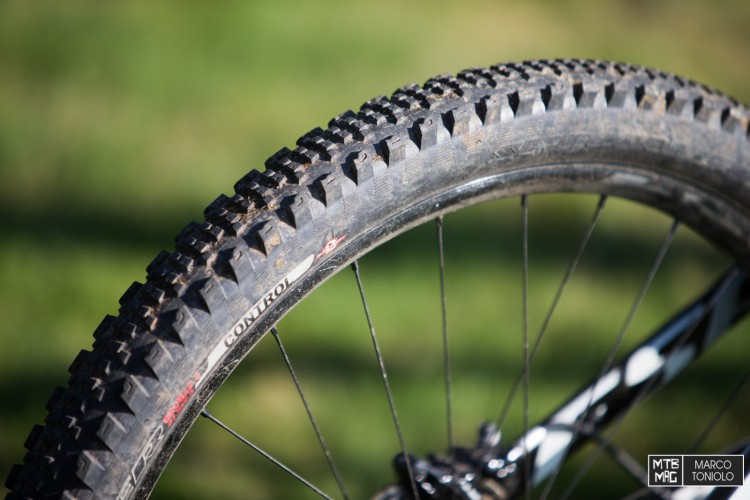
Also the dropper post comes directly from Specialized: it’s the IR with 125mm travel and 3 preset positions and a remote that fits in the SRAM Match Maker and looks like a drivetrain shifter.
Geometry
The 65.5° head angle is in line with the trend of modern enduro bikes being very capable in the downhills, what can surprise you is the 352mm BB height, rather high. This is a heritage from the 26″ front triangle that we actually like a lot, remembering too well how often we touched the ground while riding the Stumpy Evo 29 because of its very low BB.
At 422mm, the chainstays are very short, especially when compared to the competitors. The new Santacruz Nomad’s chainstays are 433mm long, Gt Sanction’s 439mm, for example.
The frame size of our bike is a Medium, which fitted perfectly to the 179cm rider’s height. We left two spacers under the stem, and the front wheel didn’t come up easily, even on steep climbs.
Uphill
We have to confess : after having tested a bunch of “modern” enduro bikes, we initially didn’t put much faith in the climbing strengths of the Specialized Enduro 650b. We chose our first ride with a first exit after 900 vertical meters of climbing, just in case we would have been already tired. We found ourselves, at the end of the day, with 1660m of climbing (and descending). What makes the difference is the riding position: it’s neutral, not being too downhillish like many of its competitors. Even the stem length – 60mm – is well chosen for the rider who wants to be able to climb well even on tech uphills.
Yes, you’ve read it correctly: we tested this bike on our ultimate climb – steep and rocky 300 vertical meters of pain – and the only reason why the tester didn’t improve his KOM was a telephone call in the middle of the climb. The 34T chairing left no choices: pedal like a madman or push you bike. Still, once on top I didn’t feel particularly tired or out of breath, even if this was my first time on that climb with such a hard gear.
It’s no electric bike, that’s for sure. Frame and components work great together: the CK Inline climbing mode, easily accessible when riding, through a golden lever, closes the low speed compression and the rebound, giving the bike a lot of traction and stopping the typical Horst-link whipping. At the same time the wide rims allowed us to run lower tyre pressure than usual, increasing grip and traction, again. Add to this a BB height that does not let the pedals impact the ground every second pedal stroke on technical trails, and you have a great climber.
Sure, you can feel the wide open front angle when the trail is getting steep and techy: it becomes hard to keep the chosen line, but not as hard as on some other enduro bikes. Still, you need to be fit to run a 34T front chainring, but that’s an easy and relatively low cost swap. Remember that we are comparing enduro bikes, we can’t expect the Specialized Enduro 650b to climb like a trail bike.
Downhill
When gravity becomes your friend again, the Enduro 650b shows its best side. Here too, we like how the complete bike is working. First of all, the geometries are a kind of sweet point for an enduro bike, starting from the BB height (again). In terms of sag, Cane Creek recommends a relatively standard 30% of the travel (1.7 cm). At a static BB height of 352mm, you don’t risk exploding every time you put down all your power on a pedal stroke to accelerate the bike after a corner. This bike was built with enduro racing in mind, where you need to pedal if you want to beat your fellow racers.
The front and rear suspension work great together: they are sensitive to small bumps, high in the travel and very reactive. Both the Pike and the CK Inline keep the bike on track, taking care of all rough terrain you can imagine. We chose as first tune the one Cane creek indicates on its website for the Enduro 650b, then working on the set up to find the most reactive setting available.
The biggest surprise comes from the wheels, especially from their inner width and their ability to run lower pressure and still be able to hit corners at speed, precisely. This is a detail that changes the feeling of the bike on the trail, giving that solidity which gives you the confidence to shred through the roughest sections without fear – or nearly without fear.
The slack head tube angle is in charge of keeping the bike steady in high speed sections and, even if the Enduro 650b does not reach the stability of a GT Sanction (which, on the other hand, is not a climber), we liked this a lot. The short chainstays keep the bike agile and reactive in narrow corners / switchbacks. The Enduro 650b is very easy to ride when you hit a sequence of turns, and it’s just so much fun.
The Guide RS brakes are great stoppers, especially with big rotors like on this bike. The IR dropper post, having an air mechanism, feels “empty” when we lower it, and sometimes this caught us by surprise on when riding at full speed. Still, the specs are all very well chosen, including the chain guide that racers will like.
Mechanicals during the testing
The rear shock bolt got loose after three rides. Once we tightened it, it never happened again.
Conclusions
At first we thought this would be another “Enduro-MiniDH” bike, but it’s not the case. Specialized hit the sweet point between agility on windy trails and steadiness in fast sections in the downhills with a bike that is able to climb well on most trails. Still, don’t expect it to be a light duty trail bike, because the Enduro Expert Carbon 650b feels right at home on technical trails, when pointing downhill.
Weight with inner tubes and without pedals: 12.70 kg. Tubeless: 12.54 kg.
Price: $6,600 US

